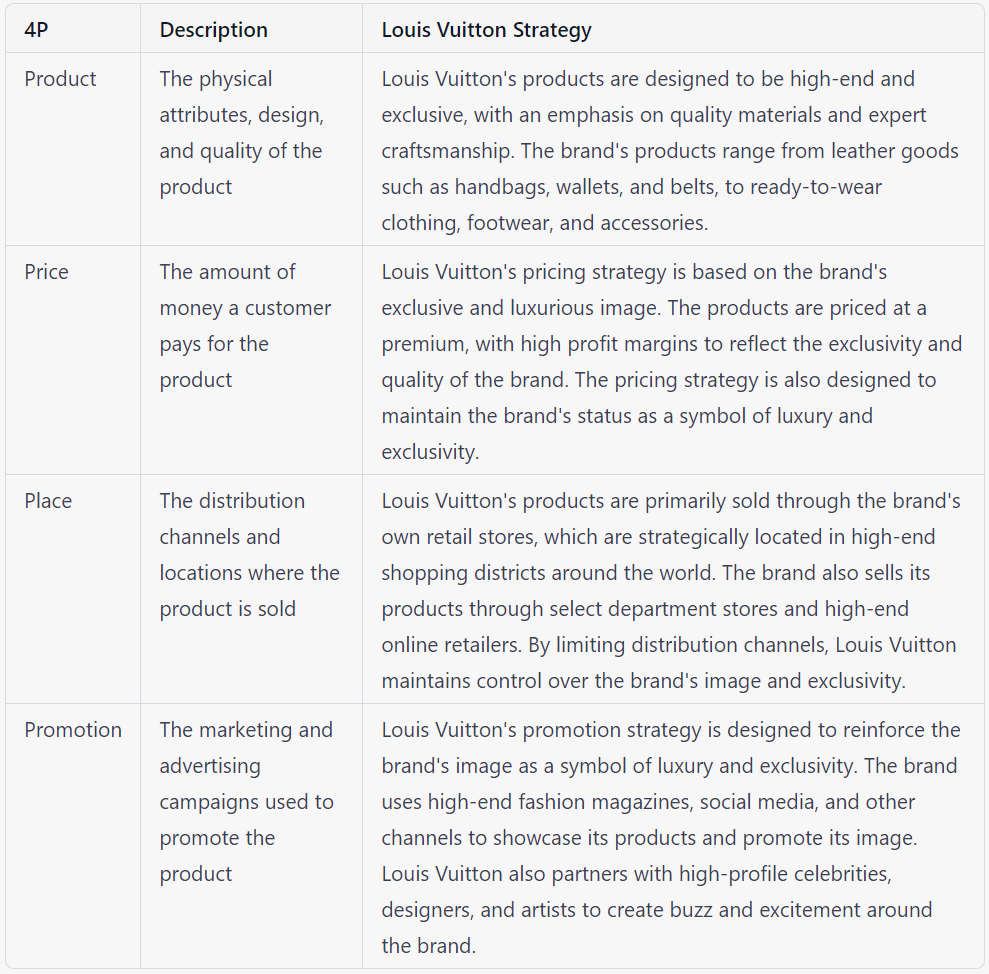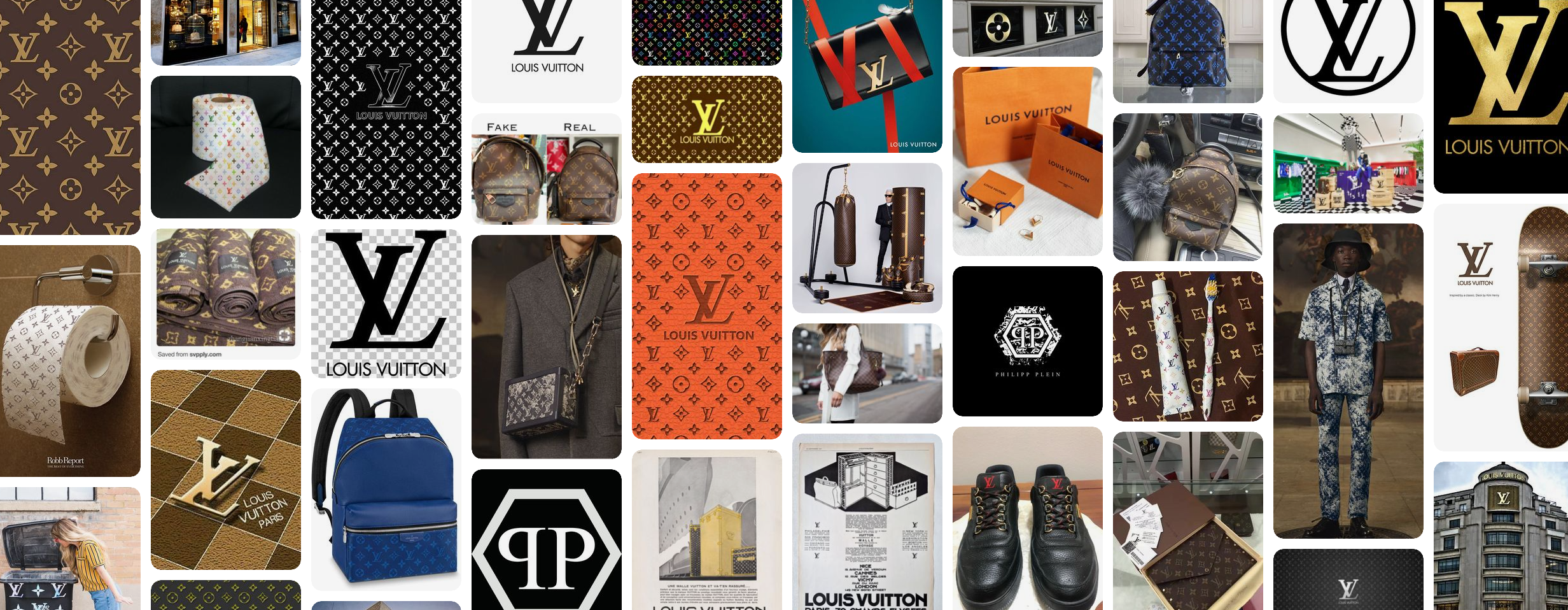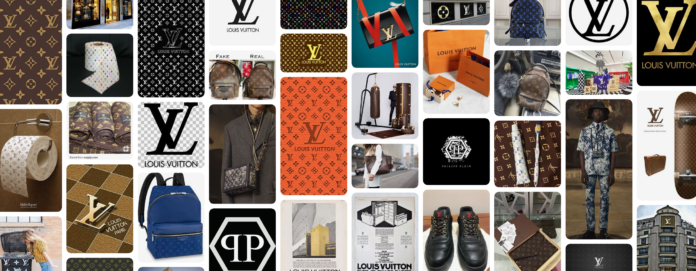How to Build a Brand Like Louis Vuitton
Building a brand like Louis Vuitton requires a combination of several elements, including a strong vision, high-quality products, effective marketing, and a dedicated customer base. Here are some steps that can help you create a successful brand like Louis Vuitton:
👋 Identify Your Unique Value Proposition
To build a brand like Louis Vuitton, you need to start by identifying your unique value proposition. What makes your brand different from others in the market? What unique features or benefits do you offer to your customers that they can’t find anywhere else? Once you have a clear understanding of your unique value proposition, you can build your brand around it.
💡 Create a Strong Brand Identity
Next, you need to create a strong brand identity that aligns with your unique value proposition. This includes your brand name, logo, tagline, and other visual elements that customers will associate with your brand. Your brand identity should be distinctive, memorable, and reflective of your brand values and personality.
👥 Develop a Target Audience
To build a successful brand, you need to understand your target audience. Who are the people you want to reach with your products or services? What are their needs, preferences, and values? By developing a deep understanding of your target audience, you can tailor your brand messaging and marketing efforts to resonate with them.
📈 Focus on Quality and Consistency
Louis Vuitton is known for its high-quality products and consistent branding. To build a brand like Louis Vuitton, you need to focus on delivering quality products and services consistently. This means investing in product development, manufacturing, and customer service to ensure that every aspect of your brand meets or exceeds customer expectations.
🔍 Leverage Influencers and Partnerships
Influencers and partnerships can help you build brand awareness and reach new audiences. Look for influencers and partners who align with your brand values and can help you reach your target audience. This might include social media influencers, brand ambassadors, or strategic partnerships with other businesses.
🚀 Invest in Marketing and Advertising
To build a successful brand, you need to invest in marketing and advertising. This includes developing a marketing strategy, creating compelling content, and leveraging various channels to reach your target audience. Consider investing in social media advertising, content marketing, email marketing, and other channels that can help you build brand awareness and drive sales.
🌟 Prioritize Customer Experience
Finally, to build a brand like Louis Vuitton, you need to prioritize the customer experience. This means providing excellent customer service, engaging with customers on social media, and creating a seamless shopping experience. By prioritizing the customer experience, you can build a loyal customer base that will help you grow your brand over time.
By developing a comprehensive marketing strategy, Louis Vuitton has established a unique identity, targeted specific audiences, utilized multiple marketing channels, and maintained consistent brand messaging. These elements have helped the brand to become one of the most recognized and respected names in the luxury fashion industry.
1. Unique Value Proposition of Louis Vuitton
Louis Vuitton’s unique value propositions are the key elements that set the brand apart from its competitors and make it a leader in the luxury fashion industry. Here are some of Louis Vuitton’s unique value propositions:
- Heritage: Louis Vuitton has a long and rich history that dates back to 1854. The brand’s heritage is a key element of its identity and is reflected in its products and marketing campaigns.
- Quality: Louis Vuitton is known for using high-quality materials and craftsmanship in its products. The brand’s products are designed to be durable and long-lasting, which is a key selling point for luxury consumers.
- Exclusivity: Louis Vuitton creates a sense of exclusivity by limiting the availability of its products and creating limited edition collections. This exclusivity is a key part of the brand’s identity and is reflected in its pricing strategy.
- Innovation: Louis Vuitton is known for its innovative approach to fashion, which is reflected in its collaborations with artists, designers, and musicians. The brand’s limited edition collections often feature cutting-edge design and materials, which help to keep the brand at the forefront of the luxury fashion industry.
- Personalization: Louis Vuitton offers personalized services to its customers, including custom monogramming and hot stamping. This personalized service is a key element of the brand’s value proposition and helps to create a sense of exclusivity and luxury for its customers.
Overall, Louis Vuitton’s unique value propositions are built on a foundation of heritage, quality, exclusivity, innovation, and personalization. These key elements set the brand apart from its competitors and help to create a strong brand identity and loyal customer base.
2. Evolution of Marketing of Louis Vuitton
Louis Vuitton is a luxury fashion brand that has been in business since 1854. Over the years, the brand’s marketing campaigns have evolved significantly to reflect changes in consumer behavior and the fashion industry as a whole.
Here is a brief overview of the evolution of Louis Vuitton’s marketing campaigns:
- Early Advertising (1850s-1960s) – In the early days of the brand, Louis Vuitton relied on word of mouth to promote their products. As the brand grew in popularity, they began to create ads that appeared in high-end magazines and newspapers. These ads typically featured illustrations of their products and focused on their durability and quality.
- The Iconic Monogram (1970s-1990s) – Louis Vuitton’s iconic monogram was created in 1896 and became a central part of their marketing campaigns in the 1970s and 1980s. The brand began to create ads that prominently featured the monogram, which became a symbol of luxury and status.
- Collaborations and Limited Editions (2000s-2010s) – In the 2000s and 2010s, Louis Vuitton began to collaborate with artists, musicians, and designers to create limited-edition products and marketing campaigns. These collaborations helped the brand stay relevant and appeal to a younger audience.
- Digital Marketing (2010s-present) – In recent years, Louis Vuitton has embraced digital marketing, using social media platforms and influencers to promote their products. The brand also creates digital campaigns that are designed to engage consumers and build brand loyalty.
Overall, Louis Vuitton’s marketing campaigns have evolved from traditional print ads to innovative digital campaigns that use collaborations and limited editions to stay relevant and appeal to a wide range of consumers.

Table: 4Ps of Louis Vuitton Marketing Strategy
3. Notable Historic Marketing Campaigns of Louis Vuitton
Louis Vuitton is a luxury fashion brand that has a long history of innovative and influential marketing campaigns. Here are some of the brand’s most notable historic marketing campaigns:
- The Steamship Bags (1890s) – In the late 1800s, Louis Vuitton created a series of sturdy, waterproof bags that were designed to withstand the rigors of travel. The brand marketed these bags to wealthy travelers, using images of the bags being loaded onto steamships and trains. The campaign was a huge success and helped establish Louis Vuitton as a brand that was synonymous with luxury travel.
- The LV Monogram (1920s) – In the 1920s, Louis Vuitton created the iconic LV monogram, which became a central part of the brand’s marketing campaigns. The monogram appeared on all of the brand’s products and was seen as a symbol of luxury and exclusivity. The brand used the monogram in its advertising, emphasizing the quality and durability of its products.
- The Louis Vuitton Cup (1980s-1990s) – In the 1980s and 1990s, Louis Vuitton sponsored the Louis Vuitton Cup, a series of sailing races that were held to determine the challenger for the America’s Cup. The brand created a range of products that were inspired by sailing, including bags and watches, and used the events to showcase its products and reinforce its association with luxury and exclusivity.
- The Marc Jacobs Era (1997-2013) – In 1997, Louis Vuitton hired Marc Jacobs as its creative director. Under Jacobs’ leadership, the brand created a series of groundbreaking marketing campaigns that challenged traditional notions of luxury fashion. Jacobs collaborated with artists and designers to create limited-edition products and used provocative imagery in the brand’s advertising.
- The Journeys Campaign (2007-2013) – In 2007, Louis Vuitton launched the Journeys campaign, which featured celebrities such as Keith Richards, Sean Connery, and Angelina Jolie traveling to exotic locations with Louis Vuitton luggage. The campaign was designed to highlight the brand’s heritage and association with luxury travel.
Overall, Louis Vuitton has a long history of innovative and influential marketing campaigns that have helped establish the brand as one of the most recognizable and prestigious luxury fashion brands in the world.
4. How to Create a Strong Brand Identity like Louise Vuitton’s
Creating a strong brand identity like Louis Vuitton’s requires a combination of factors, including a clear brand strategy, consistent visual branding, and a commitment to quality and innovation. Here are some steps that can help you create a strong brand identity:
- Define Your Brand Strategy: A strong brand identity starts with a clear brand strategy. This includes defining your brand values, target audience, and unique selling proposition. Your brand strategy should also include a positioning statement that clearly communicates how your brand is different from competitors.
- Develop Your Visual Branding: Consistent visual branding is key to building a strong brand identity. This includes your logo, typography, color palette, and imagery. Your visual branding should be consistent across all touchpoints, including your website, social media, advertising, and packaging.
- Create High-Quality Products or Services: A strong brand identity is built on a foundation of quality and innovation. Focus on creating products or services that meet the needs of your target audience and exceed their expectations. This can include investing in research and development, using high-quality materials, and providing exceptional customer service.
- Embrace Authenticity: Authenticity is essential to building a strong brand identity. Be true to your brand values and communicate them clearly and consistently across all touchpoints. This includes your messaging, advertising, and social media presence.
- Build a Strong Brand Community: A strong brand community can help reinforce your brand identity and create a sense of loyalty among your customers. Engage with your audience on social media, host events or promotions, and create opportunities for customers to share their experiences with your brand.

Overall, creating a strong brand identity like Louis Vuitton’s requires a combination of strategic planning, visual branding, quality and innovation, authenticity, and community building. By focusing on these factors, you can create a brand that is memorable, distinctive, and highly valued by your target audience.
5. How to Offer a Customer Experience like Louise Vuitton’s
Creating a customer experience like Louis Vuitton’s requires a combination of factors, including attention to detail, personalized service, and a commitment to creating a sense of luxury and exclusivity. Here are some steps that can help you create a customer experience like Louis Vuitton’s:
- Focus on the Details: Attention to detail is a key element of creating a luxury customer experience. This includes everything from the design of your store to the packaging of your products. Every touchpoint with the customer should be carefully considered and designed to create a sense of luxury and exclusivity.
- Personalize Your Service: Personalized service is essential to creating a memorable customer experience. Train your staff to be attentive to the needs and preferences of each customer, and use customer data to personalize your interactions and recommendations.
- Create a Sense of Exclusivity: Louis Vuitton creates a sense of exclusivity by limiting the availability of their products and creating limited edition collections. You can create a similar sense of exclusivity by creating limited-edition products or hosting exclusive events or experiences.
- Use Technology to Enhance the Experience: Technology can be used to enhance the customer experience in a variety of ways, such as offering virtual try-on experiences or personalized recommendations based on customer data.
- Foster a Strong Brand Community: A strong brand community can help reinforce your customer experience and create a sense of loyalty among your customers. Encourage customers to share their experiences with your brand on social media, and create opportunities for them to connect with other brand enthusiasts.
Overall, creating a customer experience like Louis Vuitton’s requires a commitment to attention to detail, personalized service, exclusivity, and technology, all while fostering a strong brand community. By focusing on these factors, you can create a memorable customer experience that sets your brand apart and builds customer loyalty.
6. Visual Branding of Louise Vuitton
Louis Vuitton’s visual branding strategy is a key component of the brand’s identity and recognition. Here are some key elements of Louis Vuitton’s visual branding strategy:
- The LV Monogram: Louis Vuitton’s iconic LV monogram is one of the most recognizable logos in the world. The monogram appears on all of the brand’s products and is a symbol of luxury and exclusivity.
- Signature Damier Pattern: In addition to the LV monogram, Louis Vuitton also uses a signature Damier pattern, which features a checkered design. This pattern is often used on the brand’s luggage and leather goods and is another recognizable element of the brand’s visual identity.
- High-Quality Materials: Louis Vuitton is known for using high-quality materials in its products, and this is reflected in the brand’s visual branding strategy. The brand’s products are often made from materials such as leather and canvas, which have a distinctive texture and feel.
- Minimalist Design: Louis Vuitton’s visual branding strategy is characterized by a minimalist design that puts the focus on the brand’s iconic monogram and Damier pattern. The brand’s products are often simple and elegant, with clean lines and an understated design.
- Consistency: Consistency is a key element of Louis Vuitton’s visual branding strategy. The brand’s products, packaging, and advertising are all designed to be instantly recognizable and consistent with the brand’s overall identity.
Overall, Louis Vuitton’s visual branding strategy is built on a foundation of high-quality materials, minimalist design, and consistency. The brand’s iconic LV monogram and Damier pattern are key elements of its visual identity and are used consistently across all touchpoints, including products, packaging, and advertising.
7. How to use EpiProdux.com To Build a Brand like Louis Vuitton
EpiProdux.com is a product management tool that can help build a strong brand like Louis Vuitton by streamlining product development and improving collaboration between teams. Here are some ways that EpiProdux.com can be used to support brand building:
- Streamlined Product Development: EpiProdux.com can help streamline the product development process by providing a centralized platform for teams to collaborate and manage tasks. This can help ensure that products are developed efficiently and in line with the brand’s overall vision and strategy.
- Improved Communication: Effective communication is essential to building a strong brand. EpiProdux.com can help improve communication between teams by providing a platform for real-time collaboration and feedback. This can help ensure that everyone is on the same page and working towards the same goals.
- Product Portfolio Management: EpiProdux.com can be used to manage the brand’s product portfolio, ensuring that all products are in line with the brand’s overall vision and strategy. The platform can be used to track product performance, identify opportunities for growth, and make data-driven decisions about which products to invest in.
- Collaboration with Suppliers and Partners: EpiProdux.com can also be used to collaborate with suppliers and partners, ensuring that everyone is working towards the same goals and that products are delivered on time and to the brand’s exact specifications.
- Data-Driven Decision Making: EpiProdux.com provides data and insights that can be used to make informed decisions about product development and portfolio management. This can help ensure that the brand is investing in the right products and that products are meeting the needs of customers.
Overall, EpiProdux.com can help build a strong brand like Louis Vuitton by streamlining product development, improving communication, managing the product portfolio, collaborating with suppliers and partners, and making data-driven decisions. By using EpiProdux.com to manage the product development process, brands can ensure that their products are in line with their overall vision and strategy, which can help build a strong and loyal customer base over time.


